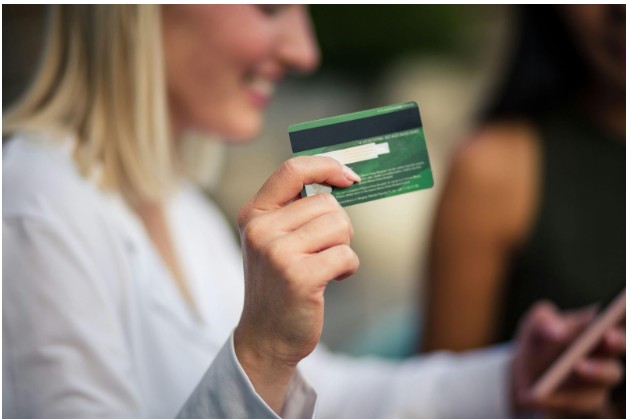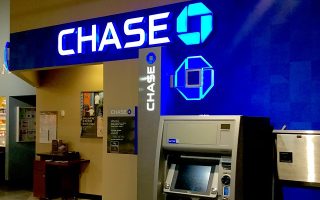- Many choose bank accounts based on outdated criteria, missing more valuable modern features.
- Digital tools and ecosystem integrations are key in managing money effectively today.
- Hidden fees and policies can quietly cost users more than they realize if left unchecked.
- Asking the right questions before opening an account helps align banking features with real-life financial needs.

Opening a bank account seems simple enough. You walk into a branch—or click a few buttons online—fill out some paperwork, and you’re done. Most people don’t think twice about it. Maybe you picked a bank your parents used, or chose the one that’s on your commute to work. It feels like a practical decision, and once it’s made, you rarely revisit it.
But here’s the catch: that seemingly harmless decision could cost you money, convenience, and financial growth every month. The truth is, banks aren’t one-size-fits-all anymore. What worked a decade ago doesn’t necessarily serve you today. And if you haven’t looked closely at what your bank offers beyond a debit card and online bill pay, there’s a good chance you’re leaving better options on the table.
This post dives into people’s common missteps when choosing a bank account—and how to avoid them. Whether you’re opening your first account or it’s been years since you looked at your options, it’s worth reevaluating what you need from your bank.
Why the Basics Aren’t Enough Anymore
For years, choosing a bank account was all about the basics. Is there a branch nearby? Are there ATM fees? Is checking free? And while those things still matter to some degree, they’re no longer enough to make a wise financial decision.
Banking has evolved fast. Today, people manage their money differently, leaning into mobile apps, investment platforms, and digital wallets. Financial flexibility is just as necessary as access. You don’t just need a place to store your money—you need a system that helps you grow, manage, and move it easily.
However, many people still use criteria from the early 2000s. They open an account because their employer has a partnership discount, or because they’ve seen ads for cashback on debit cards. While these perks aren’t bad, they’re often surface-level distractions that can lead you to overlook far more important account features.
The result? You end up stuck with an account that fits your old lifestyle but not your current goals. And that’s where people miss out—not because they made a bad choice, but because they didn’t know there were better ones.
The Hidden Value Behind Better Account Options
There’s a quiet revolution happening in the world of banking. It’s not the flashy stuff—like branded debit cards or app redesigns—but real, long-term value that can add up significantly over time.
This value lives in accounts that do more than just hold your money. Some offer meaningful interest rates, automated saving tools, or fee-free international transactions. These benefits might not be obvious at first glance, but they can powerfully shape your financial future.
That’s why finding a quality high-yield account is essential if you’re serious about making your money work for you. High-yield doesn’t just mean slightly better interest—it can mean hundreds of dollars in passive income over a year, depending on your balance. And when paired with low fees and innovative digital features, these accounts can outperform traditional options in almost every way.
But it’s not just about chasing yield. A quality account is defined by how it aligns with your needs. Does it give you easy access to your money without penalties? Are transfers and deposits seamless? Does the customer service help when things go wrong? These details matter more than a few extra bucks of APY, though ideally, you get both.
If you haven’t evaluated your bank account lately or have never explored beyond the usual suspects, you might be surprised at what’s available. Better options are out there. You just have to know what to look for.
Digital Experience and Financial Ecosystems
Let’s be real—how often do you visit a bank branch anymore? For most people, banking has gone entirely digital, and your phone is your bank. That’s why the quality of the digital experience isn’t just a bonus anymore—it’s foundational.
A clunky app that crashes or takes forever to load isn’t just annoying; it can also prevent you from managing your money effectively. Want to transfer funds between accounts quickly? Deposit a check on the fly? Set up budgeting tools or notifications? A solid digital platform makes that not only possible but effortless.
But there’s more to it than just app performance. The best modern banks don’t exist in isolation—they integrate with the rest of your financial life. Think seamless connections to investment accounts, budget planners like YNAB or Mint, or platforms like Venmo, Zelle, and PayPal. The more connected your bank is, the smoother your money management becomes.
This “financial ecosystem” approach is a game-changer, especially if you like to manage your finances or use multiple tools to manage savings, debt, and investments. Yet many people stay stuck with banks that treat tech as an afterthought. They miss that smooth, intuitive digital access can reduce stress, increase financial visibility, and help prevent overdrafts or missed payments.
Choosing a bank account without considering its digital strength is like buying a car without testing the brakes. You might not notice it at first, but when you need it most, you’ll wish you paid more attention.
Hidden Fees and Policies That Catch People Off Guard
Here’s the uncomfortable truth about many bank accounts: they’re booby-trapped with hidden fees. You might not notice them until they quietly eat away at your balance, a few dollars at a time. And by then, most people chalk it up to “just how banking works.”
But it doesn’t have to be that way.
Monthly maintenance charges, minimum balance fees, overdraft penalties, and transfer charges are common ways banks monetize your account without being upfront about it. Some institutions even charge you for not using your account enough. Seriously.
These fees are rarely in your face. They’re buried in fine print or explained in vague, roundabout ways, making it hard to tell what triggers them. And unfortunately, many customers don’t fully understand their account’s fee structure until they’ve been burned once or twice.
Let’s say you open a savings account with a great rate. Everything looks good… until you find out there’s a $10 fee every month your balance dips below $1,000. Or maybe you set up automatic transfers from checking to savings, only to realize each transfer costs you a few bucks, enough to cancel your interest gains.
The worst part? People stay with these accounts because switching seems like a hassle. But when you look at the math over time, those “small” fees can add up to hundreds of dollars lost for no good reason.
So before choosing a bank—or sticking with the one you already have—it’s worth asking: What will this cost me if I don’t play by every rule in the book? If the answer isn’t clear, that’s already a red flag.
What to Ask Before You Open an Account
Too often, people walk into a bank (or scroll through a website) ready to open an account without asking the right questions. The process feels routine, so it’s easy to skip the deeper thinking. But this is your money we’re talking about. Your chosen account should work for you, not just store your cash.
So what should you be asking?
Start with the basics, sure—but push beyond them. What fees might I incur, even if I don’t expect to? What happens if I travel or want to access my account from abroad? Does this account support automatic savings tools? How long does it take to process external transfers? These questions go beyond surface-level perks and get to the heart of what your day-to-day banking experience will feel like.
It’s also smart to think about your lifestyle and goals. Do you freelance or get paid from multiple sources? Do you need to move money quickly between personal and business accounts? Are you planning to grow your savings or just keep your funds accessible?
The correct account should match your financial rhythm. If it doesn’t, then even a “free” account can come with hidden costs—both in money and in frustration. Asking good questions now saves you from surprises later. It puts you in control of your banking relationship, rather than just reacting to whatever terms are handed to you.
Conclusion
Choosing a bank account is something most people treat like a background task—just another item on a to-do list. But the reality is, the bank you choose quietly influences how you interact with your money every single day. It shapes your ability to save, access funds, avoid fees, and plan for what’s next.
The difference between an okay account and a great one might not be evident initially. But over time, it adds up—in dollars and peace of mind. Taking a few extra minutes to look past flashy marketing and dig into what a bank offers can lead to more thoughtful, more flexible financial decisions down the line.
So if you haven’t revisited your bank account in a while, now’s the time. A better option might already be out there—one that fits your goals, habits, and how you live your financial life.\






Comments